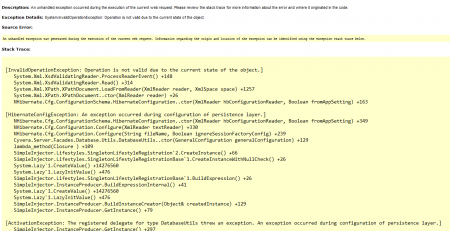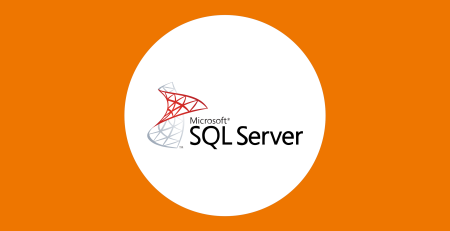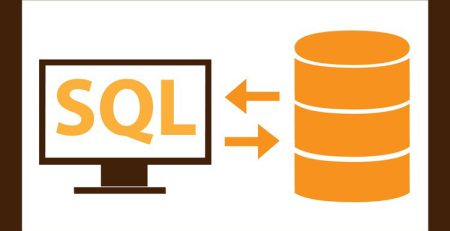What are some common uses for views in SQL databases?
Views in SQL databases are essentially virtual tables that are built from SELECT query results. Instead of actually storing data, they offer a mechanism to show data from one or more tables in an organized form. Views are used for a number of things, such to increase security, show data more effectively, and simplify complex searches. These are a few typical applications for views in SQL databases:
Simplifying Complex Queries
Simplifying complex queries is one of the primary use cases for using views in SQL databases. Here’s how views can help achieve this goal:
- Encapsulation of Logic: When dealing with complex queries involving multiple tables, joins, aggregations, and calculations, the SQL code can become lengthy and hard to manage. By creating a view that encapsulates this complexity, you can abstract away the intricate details of the query. Users can then query the view with a simpler, more intuitive syntax.
- Abstraction: Views provide a layer of abstraction over the underlying database schema. Instead of users needing to understand the intricate relationships and structures of multiple tables, they can interact with the view, which presents a coherent and simplified representation of the data they need.
- Code Reusability: If you have a complex query that needs to be used in multiple parts of your application or by multiple users, creating a view allows you to write the complex query once and then reference the view in various places. This promotes code reusability and helps maintain consistency in your application.
- Maintenance: When the underlying data model or schema changes, you only need to update the complex query logic in the view, rather than hunting down and modifying the same complex query in multiple places. This simplifies maintenance and reduces the risk of introducing errors.
- Performance: In some cases, views can help optimize performance by precomputing certain calculations or aggregations. For example, if you have a view that calculates monthly sales totals, the database can store these precomputed totals, reducing the need to perform the same calculations repeatedly in different queries.
- Ease of Use: Views allow you to give meaningful names to the columns and simplify the data presentation. This can make querying more intuitive for users who might not be familiar with the underlying table structures.
- Security and Access Control: Complex queries might involve multiple tables with different access permissions. By creating views, you can consolidate the data and control access to the view itself, ensuring that users only see the data they are allowed to access.
Here’s a simplified example to illustrate this:
Let’s say you have a database with an Orders table and a Products table, and you want to retrieve a list of orders with details about the products. The query might involve joins, filtering, and aggregation. Instead of writing this complex query each time, you can create a view called OrderDetails that encapsulates this logic. Users can then query the view to retrieve the desired information without needing to understand the complexities of the underlying tables.
-- Creating a view to simplify complex query logic
CREATE VIEW OrderDetails AS
SELECT
o.OrderID,
o.OrderDate,
p.ProductName,
p.UnitPrice,
o.Quantity
FROM
Orders o
JOIN
Products p ON o.ProductID = p.ProductID;With the view in place, users can query it simply:
-- Querying the view SELECT * FROM OrderDetails WHERE OrderDate >= '2023-01-01';
In this example, the view abstracts away the join logic and provides a simplified interface for querying order details, making it easier to work with complex data relationships.
Data Security
Using views for data security is another crucial use case in SQL databases. Views can help control and restrict access to sensitive data, providing a layer of security and ensuring that users can only see the data they are authorized to access. Here’s how views can enhance data security:
- Column-Level Security: Views allow you to expose only specific columns of a table to certain users or roles. This means that you can keep sensitive or confidential information hidden from unauthorized users while allowing them to access other necessary data.
- Row-Level Security: Views can be used to present a subset of rows based on certain conditions. This enables you to enforce row-level security, ensuring that users can only see the data that is relevant to them. For example, employees should only be able to access their own records.
- Masking Sensitive Data: In some cases, you might want to show data but mask certain parts of it, such as hiding parts of a credit card number. Views can be used to apply data masking rules, displaying altered or masked data to users while preserving the original data in the database.
- Restricting Joins: If certain tables contain sensitive information, you can use views to join them with other tables and expose only the necessary information to users. This prevents users from accidentally or intentionally joining tables to access sensitive data.
- Hiding Complexity: By creating views that abstract away the underlying table structures, you can ensure that users interact with a simplified and controlled data model. This reduces the risk of unauthorized access due to accidental misuse of complex queries.
- Access Control: Views provide an additional layer of access control. Instead of granting direct access to tables, you grant access to views, allowing you to control what data users can see and how they can interact with it.
- Audit and Monitoring: Views can be set up to log access, providing an audit trail of who accessed which data. This is helpful for compliance purposes and detecting any unauthorized access attempts.
Here’s a simple example to illustrate how views can be used for data security:
Let’s say you have an Employees table with sensitive salary information. You want to restrict access to this salary information, so you create a view called EmployeeInfo that includes only non-sensitive columns like employee name, department, and contact information. Users are granted access to this view rather than the original table.
-- Creating a view for restricted employee information CREATE VIEW EmployeeInfo AS SELECT EmployeeID, FirstName, LastName, Department, Email FROM Employees;
Now, users querying the EmployeeInfo view won’t be able to see salary information or other sensitive data. This ensures that confidential information remains protected while still allowing users to access relevant employee details.
It’s important to note that while views provide a level of security, they are not a substitute for proper database security mechanisms such as user roles, permissions, and encryption. A comprehensive security strategy should include a combination of techniques to safeguard your data effectively.
Data Abstraction
Data abstraction is another significant use case for views in SQL databases. Views allow you to present a simplified and abstracted view of the data to users, hiding the underlying complexities of the database structure. This abstraction can make data access more intuitive and user-friendly. Here’s how data abstraction with views works:
- Simplified Data Representation: Views provide a way to hide the details of complex table relationships, joins, and calculations. Users can interact with the view as if it were a single table, even if the data is actually spread across multiple tables.
- Hide Implementation Details: If the database schema undergoes changes, the views can shield users from those changes. The view’s structure remains constant, while the underlying tables can be modified to accommodate new requirements or optimizations.
- Unified Data Access: Instead of having to remember complex join conditions and relationships, users can query a view that presents data in a unified and easy-to-understand format. This is especially useful when dealing with databases that have a highly normalized structure.
- Simplified Reporting: Abstraction through views can simplify the process of generating reports and analytics. Instead of having to build complex queries each time, users can query views designed specifically for reporting needs.
- Aggregated and Summarized Data: Views can provide aggregated or summarized data, making it easier to retrieve common summaries without needing to write complex aggregation queries each time.
- Virtual Tables: Views essentially create virtual tables that act as snapshots of the data at the time of querying. This can be useful for creating temporary tables with specific criteria or calculations.
- Data Consistency: Abstraction through views helps ensure that different users access data in a consistent and standardized manner. This reduces the likelihood of errors due to inconsistent querying.
- Migration and Upgrades: When migrating or upgrading databases, views can facilitate a smoother transition by allowing you to maintain compatibility with existing queries and applications, even if the underlying schema changes.
Here’s an example illustrating how data abstraction with views can work:
Suppose you have a database with several tables: Customers, Orders, and OrderDetails. The relationship between these tables involves multiple joins to retrieve customer information and order details. Instead of forcing users to understand these complex joins, you can create a view called CustomerOrders that abstracts away these details and presents a simplified view of customer orders.
-- Creating a view to abstract away complex joins
CREATE VIEW CustomerOrders AS
SELECT
c.CustomerID,
c.FirstName,
c.LastName,
o.OrderID,
o.OrderDate,
od.ProductName,
od.Quantity,
od.UnitPrice
FROM Customers c
JOIN Orders o ON c.CustomerID = o.CustomerID
JOIN OrderDetails od ON o.OrderID = od.OrderID;With the CustomerOrders view in place, users can query customer orders without needing to understand the underlying table relationships:
-- Querying the abstracted view SELECT * FROM CustomerOrders WHERE FirstName = 'John';
In this example, the view simplifies data access for users by providing a consolidated view of customer orders, abstracting away the complexities of the underlying tables and joins.
Consolidating Data
Consolidating data is another valuable use case for views in SQL databases. Views can help you aggregate and combine data from multiple tables into a single virtual table, making it easier to access and analyze information. Here’s how views can assist in consolidating data:
- Centralized Access: Views allow you to create a single entry point for accessing data from multiple tables. Instead of querying multiple tables separately, users can query the view to retrieve consolidated information.
- Simplified Reporting: Views can be tailored for reporting purposes, bringing together data from various sources and presenting it in a way that is suitable for analysis and reporting.
- Avoiding Repetitive Joins: When data is spread across multiple related tables, it might require repeated joins to retrieve relevant information. By creating a view with pre-joined data, you simplify queries and reduce the need for complex joins.
- Business Logic Integration: Views can incorporate business logic, calculations, and aggregations. This is particularly useful when you need to consistently apply certain calculations across different parts of your application.
- Historical Data: Views can consolidate historical data by pulling together information from multiple tables with different time periods. This makes it easier to analyze trends and patterns over time.
- Data Presentation: Consolidated views can provide a more user-friendly and intuitive representation of data. Instead of navigating through complex relationships, users can work with a simplified view that presents data logically.
- Security and Access Control: By consolidating data into views, you can enforce security and access controls on the consolidated dataset rather than on individual tables, simplifying access management.
- Performance Optimization: Depending on the database system, views can be optimized to precompute aggregations, reducing the need for resource-intensive calculations when querying the view.
Here’s an example to illustrate data consolidation with views:
Suppose you have a database with tables Sales, Expenses, and Customers, and you want to create a consolidated view of financial information for reporting purposes. You can create a view called FinancialSummary that combines sales and expense data for each customer:
-- Creating a view to consolidate financial data
CREATE VIEW FinancialSummary AS
SELECT
c.CustomerID,
c.FirstName,
c.LastName,
SUM(s.Amount) AS TotalSales,
SUM(e.Amount) AS TotalExpenses
FROM Customers c
LEFT JOIN Sales s ON c.CustomerID = s.CustomerID
LEFT JOIN Expenses e ON c.CustomerID = e.CustomerID
GROUP BY c.CustomerID, c.FirstName, c.LastName;With the FinancialSummary view, users can retrieve a consolidated financial summary for each customer without needing to manually join the sales and expense tables:
-- Querying the consolidated financial summary view SELECT * FROM FinancialSummary;
In this example, the view consolidates sales and expense data into a single view, making it easier to analyze and report financial information for each customer.
Data Transformation
Data transformation is a valuable use case for views in SQL databases. Views can help you transform data on-the-fly by applying calculations, formatting, and data manipulation. This can be particularly useful when you need to present data in a specific format or perform calculations without altering the underlying data. Here’s how views can assist in data transformation:
- Data Formatting: Views can be used to format data in a more human-readable or standardized way. This is especially helpful when dealing with data that needs to be presented to users or integrated with other systems.
- Calculated Columns: Views can add calculated columns to the data, performing computations on existing data and presenting the results as if they were part of the original table.
- Data Type Conversion: Views can be used to convert data from one data type to another. For instance, you might convert a numerical value to a formatted currency string.
- Aggregations and Summaries: Views can precalculate aggregations and summaries, reducing the need to compute these values in multiple queries.
- Joins and Data Transformation: Views can join multiple tables and transform the joined data before presenting it to users. This is useful when the original tables don’t have the exact structure you need for your application.
- Data Denormalization: Views can denormalize data, combining information from multiple normalized tables into a single view. This can improve query performance when normalized tables would result in complex joins.
- Pivoting and Unpivoting: Views can pivot data (reorganize rows as columns) or unpivot data (reorganize columns as rows) to match specific reporting or analysis requirements.
- Data Cleaning: Views can be used to filter out or transform data that doesn’t meet certain criteria. This helps in creating cleaner and more accurate datasets for analysis.
- Integration with External Systems: Views can help in presenting data in a format that is compatible with other systems or applications, making data integration smoother.
Here’s an example to illustrate data transformation with views:
Suppose you have a database with an Orders table that stores order data, including the order date and the total amount of each order. You want to create a view that shows the order details along with a calculated column that displays the order amount in a formatted currency format.
-- Creating a view to transform data (currency formatting)
CREATE VIEW OrderDetailsWithFormattedAmount AS
SELECT
OrderID,
OrderDate,
TotalAmount,
CONCAT('$', FORMAT(TotalAmount, 2)) AS FormattedAmount
FROM Orders;With the OrderDetailsWithFormattedAmount view in place, users can retrieve order details with the total amount displayed in a formatted currency format:
-- Querying the transformed data view SELECT * FROM OrderDetailsWithFormattedAmount;
In this example, the view transforms the data by calculating a formatted currency amount based on the existing total amount, making it easier to present the data to users in a more user-friendly manner.
Joining and Denormalization
Joining and denormalization are important use cases for views in SQL databases. Views can simplify the process of retrieving data from multiple tables by performing joins and even denormalizing data to present a more comprehensive and user-friendly view of information. Here’s how views can be used for joining and denormalization:
- Joining Tables: Views can encapsulate complex join operations, allowing users to retrieve data from multiple related tables without having to write the join logic in every query. This simplifies queries and improves code reusability.
- Denormalization: Views can denormalize data by combining information from multiple normalized tables into a single view. This can improve query performance by reducing the need for complex joins in situations where normalized tables would require them.
- Performance Optimization: By precomputing join operations and denormalizing data, views can enhance query performance. This is especially useful for frequently used queries that involve multiple tables.
- Simplified Queries: Instead of writing intricate join conditions in every query, users can query a view that already performs the necessary joins. This simplifies querying and makes the SQL code more readable.
- Data Aggregation: Views can aggregate data from multiple tables, providing a summarized or aggregated view of the information. This is helpful for generating reports and analytics.
- Business Logic Integration: Views can include business logic and calculated columns that involve data from multiple tables. This helps ensure consistent calculations across queries and applications.
- Historical Data: Views can combine data from different time periods to create a historical snapshot. For example, you could create a view that shows the state of an inventory based on historical sales and purchases.
- Data Presentation: Views can present data in a format that’s suitable for specific applications or reporting needs. This can involve combining information from various tables to create a unified view.
Here’s an example to illustrate joining and denormalization with views:
Suppose you have a database with normalized tables Customers, Orders, and OrderDetails. You want to create a view that joins these tables to provide a denormalized view of customer orders with order details.
-- Creating a view to join and denormalize data
CREATE VIEW CustomerOrderDetails AS
SELECT
c.CustomerID,
c.FirstName,
c.LastName,
o.OrderID,
o.OrderDate,
od.ProductName,
od.Quantity,
od.UnitPrice
FROM Customers c
JOIN Orders o ON c.CustomerID = o.CustomerID
JOIN OrderDetails od ON o.OrderID = od.OrderID;With the CustomerOrderDetails view, users can retrieve a comprehensive view of customer orders along with order details, without needing to manually perform joins:
-- Querying the denormalized view SELECT * FROM CustomerOrderDetails WHERE CustomerID = '123';
In this example, the view simplifies querying by encapsulating complex joins and providing a denormalized view of customer orders and order details. This can enhance performance and code readability when dealing with complex relationships between normalized tables.
Partitioning
Views are not typically used for implementing data partitioning directly. Data partitioning involves splitting a large table into smaller, more manageable pieces called partitions, usually based on a specific criterion like a range of values or a list of values. Each partition can be stored separately and queried individually, leading to performance improvements in certain scenarios.
While views themselves are not the mechanism for data partitioning, they can be used in conjunction with partitioned tables to simplify querying and provide a unified interface for accessing partitioned data. Here’s how views can be related to partitioned tables:
- Partitioned Tables: The primary mechanism for data partitioning is partitioned tables. These are tables that are divided into segments or partitions based on a chosen partitioning key. Each partition can be stored in a separate file or location, optimizing data storage and access.
- Partition Elimination: When you query a partitioned table, the database engine can use the partitioning key to eliminate unnecessary partitions from the query process, improving query performance. This is one of the main benefits of data partitioning.
- View Abstraction: Views can abstract away the complexities of querying partitioned tables. Instead of users needing to understand partitioning logic and write separate queries for each partition, they can query a view that encompasses all partitions.
- Consolidation: Views can consolidate data from various partitions into a single unified view. This can be useful for reporting and analysis, allowing users to access partitioned data as if it were coming from a single table.
Here’s a simplified example to illustrate how views can be used with partitioned tables:
Suppose you have a large Sales table that is partitioned by year. Each partition contains sales data for a specific year. You can create a view called ConsolidatedSales that combines data from all partitions and provides a seamless way to query across multiple years:
-- Creating a view to consolidate data from partitioned tables CREATE VIEW ConsolidatedSales AS SELECT * FROM Sales_Partition_2020 UNION ALL SELECT * FROM Sales_Partition_2021 UNION ALL SELECT * FROM Sales_Partition_2022;
With the ConsolidatedSales view, users can query sales data from all partitions without needing to know the specifics of which partition contains which year’s data:
-- Querying the consolidated sales view SELECT * FROM ConsolidatedSales WHERE ProductID = '123';
In this example, the view simplifies querying and presents partitioned data as a single consolidated table, enhancing the user experience.
It’s important to note that while views can help simplify querying and reporting on partitioned data, the performance benefits of partitioning are achieved at the table level through the database’s partitioning mechanisms.
Aggregation
Using views for aggregation is a practical use case in SQL databases. Views can help you precompute and store aggregated data, making it easier to retrieve summarized information without needing to perform complex calculations each time. Here’s how views can assist in aggregation:
- Precomputed Aggregates: Views can store precomputed aggregate values, such as sums, averages, counts, or other statistics. This reduces the need to recompute these aggregates in every query, improving query performance.
- Simplified Queries: Users can query the view to retrieve aggregated data without having to write complex aggregation queries each time. This simplifies the querying process and reduces the likelihood of errors.
- Report Generation: Views can be designed to facilitate reporting by presenting data in a format that is conducive to generating reports, charts, and visualizations.
- Data Presentation: Aggregated views can offer a concise and summarized representation of data, which can be useful for presenting key metrics to stakeholders.
- Historical Trends: Views can aggregate data over time to show trends and patterns, helping with historical analysis and decision-making.
- Performance Optimization: By storing aggregated data in a view, you can reduce the computational load on the database server, leading to improved query performance.
Here’s an example illustrating the use of views for aggregation:
Suppose you have a database with an OrderDetails table that stores individual line items of orders. You want to create a view that provides a summary of total sales for each product.
-- Creating an aggregated view for total product sales
CREATE VIEW ProductSalesSummary AS
SELECT
ProductID,
SUM(Quantity) AS TotalQuantitySold,
SUM(Quantity * UnitPrice) AS TotalRevenue
FROM OrderDetails
GROUP BY ProductID;With the ProductSalesSummary view, users can retrieve summarized product sales data without needing to calculate totals and sums in their queries:
-- Querying the aggregated product sales view SELECT * FROM ProductSalesSummary WHERE TotalRevenue > 1000;
In this example, the view stores aggregated data for product sales, making it convenient to access summarized information for reporting and analysis.
Historical Data
Using views for historical data is another valuable use case in SQL databases. Views can be employed to create historical snapshots of data at specific points in time or over certain time intervals. This enables users to analyze past states of the data and track changes over time. Here’s how views can be used for handling historical data:
- Data Archiving: Views can help in archiving historical data by creating snapshots of data at regular intervals. This is useful for compliance, auditing, and reference purposes.
- Time Travel Queries: Historical views allow users to “time-travel” and query data as it existed at a specific point in the past. This can be helpful for debugging or understanding changes that occurred over time.
- Comparative Analysis: By creating historical snapshots and views, you can compare data across different time periods to identify trends, anomalies, or patterns.
- Rollback and Recovery: Historical data views can be used to restore data to a previous state in case of errors or data corruption.
- Auditing and Compliance: Historical views can serve as audit trails, showing changes made to the data over time and providing a record of data modifications.
- Trend Analysis: Views can consolidate historical data to analyze trends and make informed decisions based on historical patterns.
- Data Analysis: Historical views allow you to analyze the evolution of data over time, enabling better insights and decision-making.
Here’s a simple example illustrating how historical data views can be used:
Suppose you have a database with an Employee table that tracks changes to employee data. You want to create a view that shows the state of employee information at the end of each month.
-- Creating a historical view for employee data at the end of each month
CREATE VIEW EmployeeSnapshot AS
SELECT
e.EmployeeID,
e.FirstName,
e.LastName,
e.Department,
e.Salary,
e.HireDate,
MAX(HistoryDate) AS SnapshotDate
FROM EmployeeHistory e
GROUP BY e.EmployeeID, e.FirstName, e.LastName, e.Department, e.Salary, e.HireDate;With the EmployeeSnapshot view, users can query employee data as it existed at the end of each month, allowing them to track changes over time:
-- Querying the historical employee snapshot view SELECT * FROM EmployeeSnapshot WHERE SnapshotDate = '2023-07-31';
In this example, the view captures historical snapshots of employee data, enabling users to analyze changes and trends in the employee information over different time periods.
Compatibility
Using views for maintaining compatibility is an important use case in SQL databases, especially when dealing with changes in database schema or when integrating with legacy systems. Views can provide a consistent interface for applications and queries, even when the underlying data structures change. Here’s how views can be used to ensure compatibility:
- Schema Abstraction: Views can abstract away the details of changes made to the underlying schema. This allows applications and queries to continue working without requiring modifications due to schema changes.
- Application Compatibility: When the structure of tables changes, views can shield applications from those changes by preserving the view’s structure and interface.
- Renaming Columns or Tables: If you need to rename columns or tables for any reason, views can help maintain compatibility by keeping the original column and table names in the view definition while adjusting them behind the scenes.
- Column Renaming: Views can be used to provide backward compatibility when columns are renamed or removed from tables.
- Query Optimization: When query performance improvements are made by changing indexes or table structures, views can help ensure that queries written before the optimization still work as intended.
- External Integrations: If you have external systems or applications that rely on a certain data structure, you can use views to present the data in the expected format even if the underlying tables change.
- API Stability: If you expose your database through an API or service layer, using views to abstract the database structure can prevent breaking changes for API consumers.
Here’s a basic example to illustrate how views can be used for compatibility:
Suppose you have an existing application that relies on a table called OldCustomerInfo. Over time, the database is updated, and the table is renamed to NewCustomerInfo. To maintain compatibility with the application, you can create a view that mimics the original table structure:
-- Creating a view for maintaining compatibility with the old table structure
CREATE VIEW OldCustomerInfo AS
SELECT
CustomerID AS OldCustomerID,
FirstName AS OldFirstName,
LastName AS OldLastName
FROM NewCustomerInfo;With the OldCustomerInfo view in place, the application can continue querying data as if the original table structure still exists:
-- Querying the compatibility view SELECT OldCustomerID, OldFirstName FROM OldCustomerInfo WHERE OldLastName = 'Smith';
In this example, the view provides backward compatibility for the application by abstracting away the changes in the underlying table structure. This ensures that the application can function without requiring immediate changes to its code.
Code Reusability
Code reusability is an important benefit of using views in SQL databases. Views allow you to encapsulate complex logic, calculations, and transformations into reusable components that can be referenced in multiple queries and applications. Here’s how views can be used to enhance code reusability:
- Centralized Logic: Views allow you to centralize complex query logic in a single place. This logic can be reused across different parts of your application without duplicating the code.
- Consistent Calculations: Views can include calculations, aggregations, and business logic. By using views, you ensure that these calculations are consistent and don’t vary across different parts of your application.
- Reduced Code Duplication: Instead of writing the same complex queries in multiple places, you can create a view that encapsulates the logic. This reduces the likelihood of introducing errors due to inconsistencies or copy-paste mistakes.
- Modularity: Views enable you to break down complex queries into modular components. This makes it easier to manage and maintain your codebase, as changes to the underlying logic can be made in one place.
- Ease of Updates: When business requirements change or the underlying data structure is modified, you only need to update the logic in the view. This change is then automatically reflected wherever the view is used.
- Abstraction: Views abstract away the details of the underlying data structure, allowing applications to interact with a simplified and standardized representation of the data.
- Team Collaboration: Views provide a way for teams to collaborate effectively. A well-defined set of views can serve as a common language for developers working on different parts of an application.
- Legacy System Integration: When integrating with legacy systems that use specific data structures, views can act as an interface, allowing you to present the data in the format expected by the legacy system.
Here’s a simple example illustrating how views can enhance code reusability:
Suppose you have an e-commerce database with a complex query to calculate customer lifetime value (CLV) based on order history, order values, and customer details. Instead of writing this query in multiple places, you can create a view called CustomerCLV that calculates the CLV and encapsulates the logic:
-- Creating a view to calculate customer lifetime value
CREATE VIEW CustomerCLV AS
SELECT
c.CustomerID,
c.FirstName,
c.LastName,
SUM(o.OrderTotal) AS LifetimeValue
FROM Customers c
JOIN Orders o ON c.CustomerID = o.CustomerID
GROUP BY c.CustomerID, c.FirstName, c.LastName;With the CustomerCLV view in place, you can use it in various parts of your application to retrieve customer lifetime value without needing to repeat the complex calculation:
-- Querying the customer lifetime value view SELECT * FROM CustomerCLV WHERE LifetimeValue > 1000;
In this example, the view promotes code reusability by encapsulating the calculation of customer lifetime value, making it easier to use and maintain throughout the application.
Data Presentation
Using views for data presentation is a valuable use case in SQL databases. Views allow you to create customized, user-friendly representations of data that are tailored to the needs of specific applications, users, or reporting requirements. Here’s how views can be used for data presentation:
- Custom Data Views: Views can be designed to present data in a format that is intuitive and easy for users to understand, regardless of the complexity of the underlying data structure.
- Data Aggregation: Views can aggregate data to provide summarized views that show key metrics or totals, making it easier to get an overview of the data.
- Formatted Output: Views can format data according to specific requirements, such as applying date formats, currency symbols, or other presentation-related adjustments.
- User-Friendly Column Names: Views can provide user-friendly column names that are easier to understand than the original column names in the underlying tables.
- Integration with Reporting Tools: Views can be tailored to work seamlessly with reporting and business intelligence tools, ensuring that the data is presented in a way that aligns with the requirements of these tools.
- Data Transformation: Views can transform and pivot data to suit different reporting or analysis needs, presenting data in a way that is conducive to making informed decisions.
- Hiding Sensitive Data: Views can hide sensitive or confidential data from certain users while still providing relevant information that they need.
- Consolidation: Views can consolidate data from various sources or tables, providing a unified view of the information that is needed for specific applications.
Here’s a simplified example to illustrate the use of views for data presentation:
Suppose you have a database with a complex schema that includes tables for customers, orders, and products. You want to create a view that presents a concise summary of customer orders, including the customer’s full name, order date, product name, and quantity ordered.
-- Creating a view for presenting customer order summary
CREATE VIEW CustomerOrderSummary AS
SELECT
CONCAT(c.FirstName, ' ', c.LastName) AS CustomerName,
o.OrderDate,
p.ProductName,
od.Quantity
FROM Customers c
JOIN Orders o ON c.CustomerID = o.CustomerID
JOIN OrderDetails od ON o.OrderID = od.OrderID
JOIN Products p ON od.ProductID = p.ProductID;With the CustomerOrderSummary view, users can retrieve a simplified and user-friendly summary of customer orders:
-- Querying the customer order summary view SELECT * FROM CustomerOrderSummary;
In this example, the view is designed to present customer order information in a concise and easy-to-understand format, making it more accessible to users and applications.
Conclusion
In conclusion, views play a crucial role in SQL databases by providing a versatile and powerful tool for various purposes. They enhance data access, simplify complex queries, ensure data security, abstract complexity, consolidate information, aid in data transformation, facilitate historical data analysis, maintain compatibility, support code reusability, and offer user-friendly data presentation. Here’s a recap of the key takeaways:
- Enhanced Data Access: Views simplify data access by providing a simplified interface to users, shielding them from underlying table complexities and relationships.
- Simplifying Complex Queries: Views can encapsulate intricate joins, calculations, and transformations, making queries more readable and manageable.
- Data Security: Views allow you to control data access and mask sensitive information, enhancing security and privacy.
- Data Abstraction: Views abstract away complex table structures, offering a unified and intuitive data representation.
- Consolidating Data: Views help consolidate data from multiple tables, making it easier to retrieve and analyze information.
- Data Transformation: Views enable data formatting, calculated columns, and data type conversion, simplifying data manipulation.
- Joining and Denormalization: Views can perform joins and denormalize data to improve query performance and simplify querying.
- Historical Data: Views can store historical snapshots, enabling analysis of past states of data and tracking changes over time.
- Compatibility: Views maintain compatibility with changing schemas, applications, and legacy systems, providing a stable interface.
- Code Reusability: Views encapsulate complex logic, calculations, and transformations, promoting code reuse across applications.
- Data Presentation: Views create customized data presentations, making data more understandable and suitable for reporting.
Overall, views are a valuable tool for enhancing database functionality, improving query performance, promoting code quality, and making data more accessible and meaningful to users. By leveraging views effectively, you can streamline your database operations and support a wide range of applications and reporting needs.













Leave a Reply